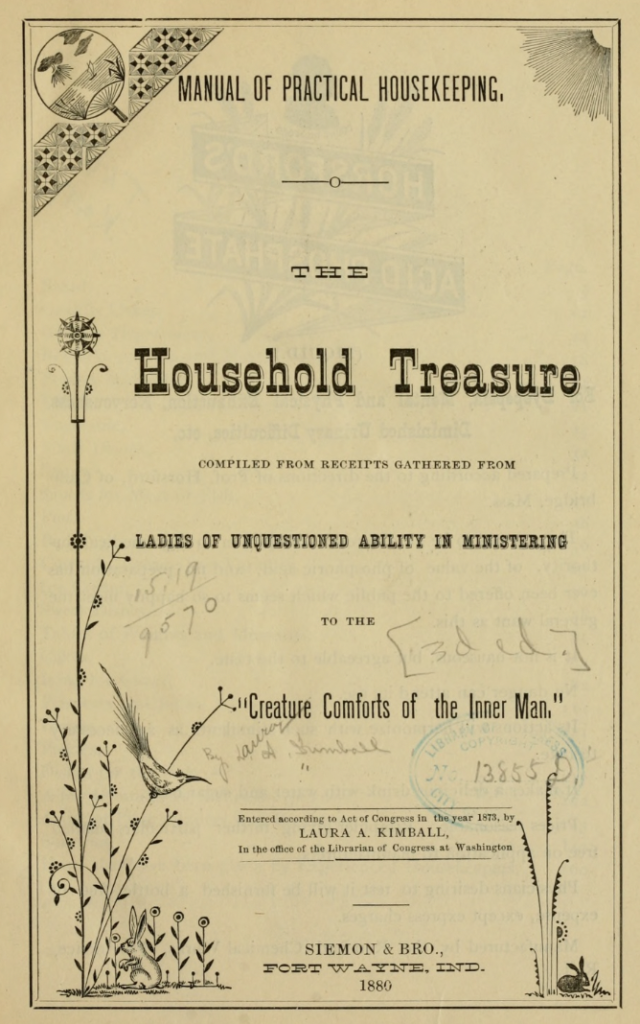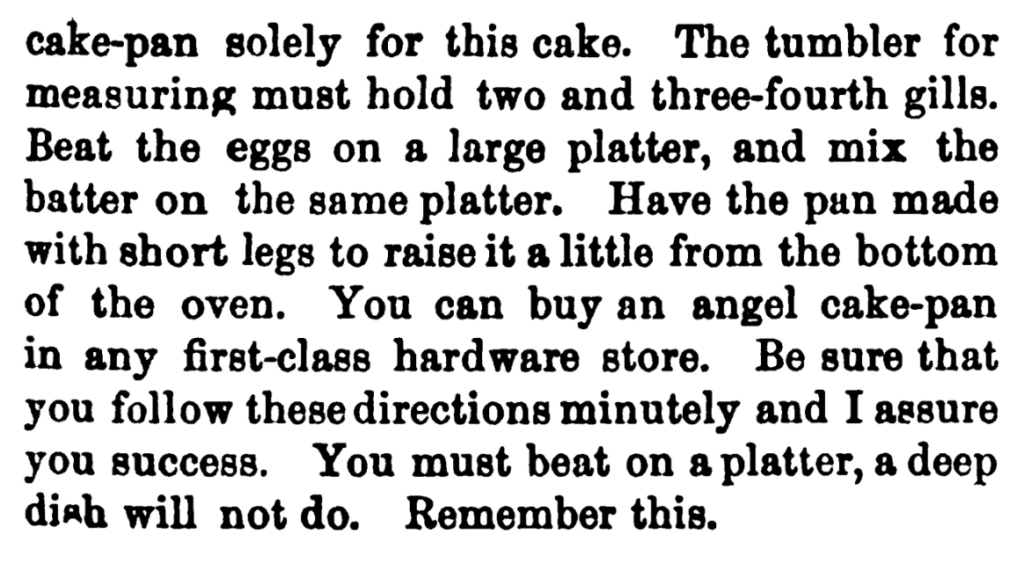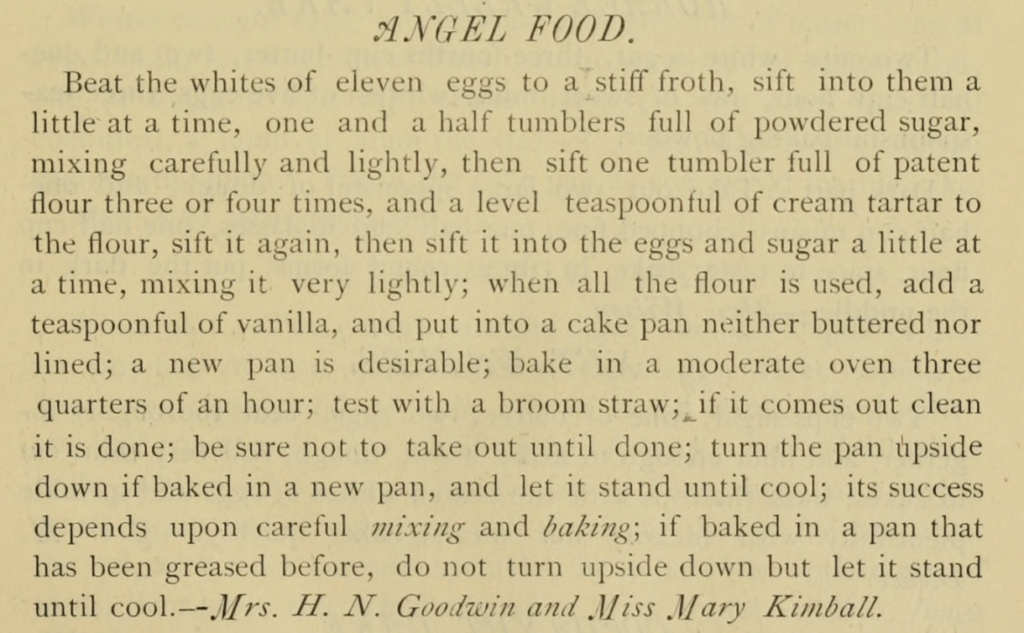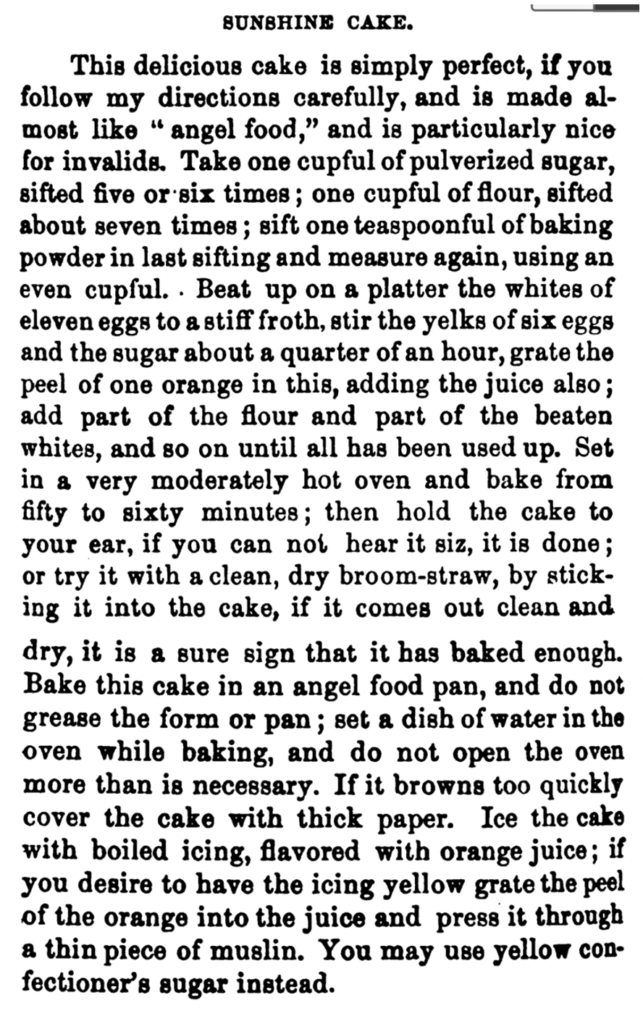A Century of Cakes Starts with Angel Food
Ever since I came across a list of the most popular cakes in the U.S. by decade, my daughter and I have wanted to bake our way through them. This weekend, the project is finally starting. First up: the late-nineteenth-century darling of picnics and invalid supper-trays: Angel Food Cake. This cake gets its name from its astonishingly white crumb — which gets its whiteness from the fact that it is made with only egg whites, sugar, flour, cream of tartar, and a dab of vanilla. With no egg yolks, butter, or any other form of fat, this cake is light and airy as angel wings.

It’s also a little tricky to bake. You have to be scrupulously careful not to get even a dab of egg yolk in your egg whites, to beat them to the right consistency before adding the sugar, and to fold in the highly-sifted flour most carefully. You do not oil the tube pan, do not check the oven too often, and cool the cake upside-down (with its center tube upended on the neck of a wine bottle, say). You cut it with a serrated knife, or — if you’re my mother — with a tricky action involving two forks back-to-back (imagine you are shredding pulled pork, except you are gently separating the soft cake from itself). Everything you do, in short, is designed to ensure the cake rises into fluffy, cloud-like pillows that will make the angels sing, and that nothing after that rising makes the angels sad enough to deflate your cake. And with it, your confidence.
Because I like the idea of relying on original recipes, I did some digging in nineteenth-century cookbooks. The one we will be using this weekend comes from Aunt Babette’s Cook Book (Bloch Publishing & Printing, 1889).


* Notes: a gill = 4oz, so 2¾ gills = 11oz Importantly, this is a liquid measure, not a weight. So I calculate that a “tumbler” of flour in this recipe = 1½ cups minus 1T. 1½ tumblers of sugar = 2 cups plus ½T. A “moderate oven” is around 325ºF.

Sally’s Baking Addiction, which is a tremendous site full of the most consistently excellent baked goods’ recipes I’ve found, has a lot of tips for making Angel Food cake from scratch, as well as a modern recipe, if you feel daunted by the nineteenth-century ones. I highly recommend reading her detailed advice, even if you use one of these old recipes. Vitally: the eggs should be beaten to soft (not stiff!) peaks before adding sugar, and you can make “superfine sugar” (surely, Aunt Babette’s “pulverized sugar”) by pulsing granulated sugar in a food processor to get the right consistency. (Wikipedia will tell you lots about the chemistry of this cake, and the molecular composition of egg whites, if you are so inclined.)
There were any number of church cookbooks that also offered recipes. Unlike many other cakes, this one seems to have very little variety in proportions, although there was great variety in how detailed the directions were. The ladies in The Household Treasure used powdered sugar, which Sally does not recommend, despite the fact that those ladies are proclaimed to be of Unquestioned Ability in Ministering to the Creature Comforts of the Inner Man.
I found it fascinating that every nineteenth-century cookbook that had an Angel Food Cake recipe also had an adjacent “Sunshine Cake.” The method for the two is much the same, although the latter uses some egg yolks and, in the best-sounding of them (again, courtesy of Aunt Babette), orange zest and juice for flavoring. If Angel Food doesn’t float your boat, perhaps you’d like to try its oranger cousin, which is, according to Aunt Babette, simply perfect.

If you bake along with us, drop a note in the comments about how it goes!